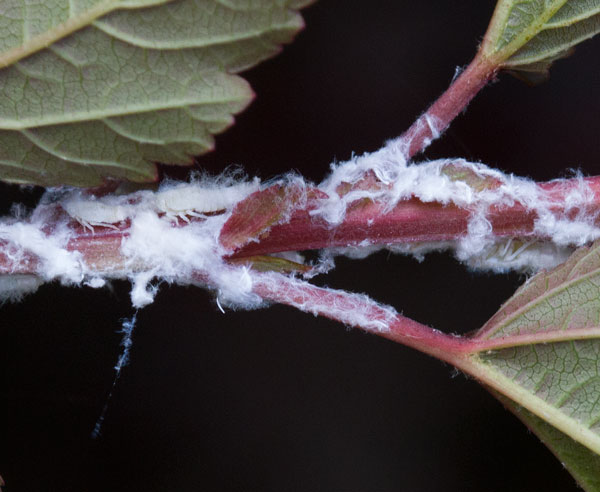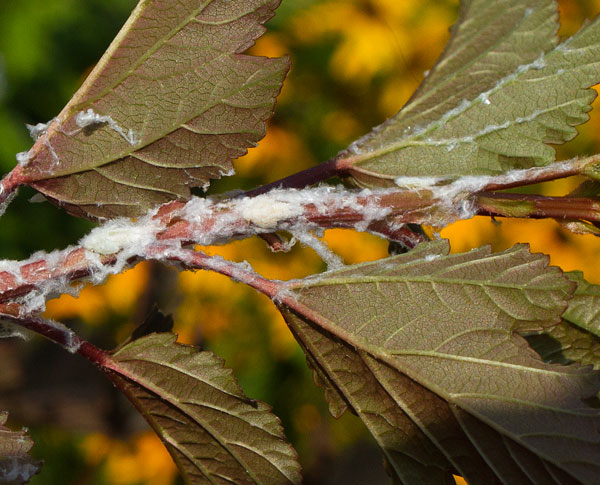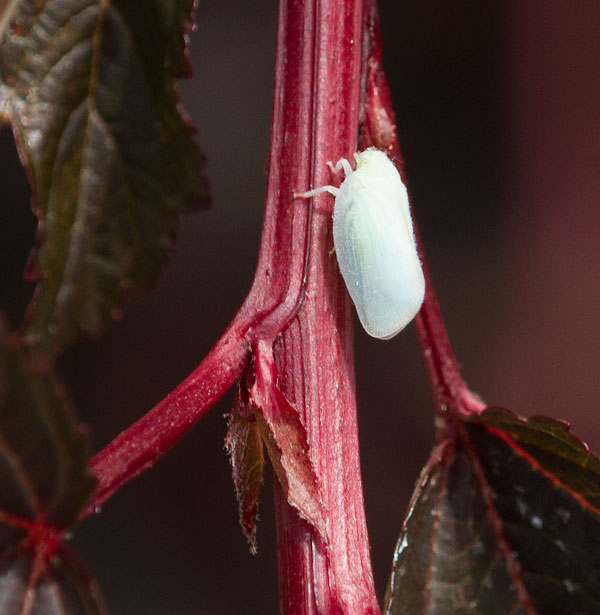What Is the White Fluffy Stuff on My Shrubs?
go.ncsu.edu/readext?307327
en Español / em Português
El inglés es el idioma de control de esta página. En la medida en que haya algún conflicto entre la traducción al inglés y la traducción, el inglés prevalece.
Al hacer clic en el enlace de traducción se activa un servicio de traducción gratuito para convertir la página al español. Al igual que con cualquier traducción por Internet, la conversión no es sensible al contexto y puede que no traduzca el texto en su significado original. NC State Extension no garantiza la exactitud del texto traducido. Por favor, tenga en cuenta que algunas aplicaciones y/o servicios pueden no funcionar como se espera cuando se traducen.
Português
Inglês é o idioma de controle desta página. Na medida que haja algum conflito entre o texto original em Inglês e a tradução, o Inglês prevalece.
Ao clicar no link de tradução, um serviço gratuito de tradução será ativado para converter a página para o Português. Como em qualquer tradução pela internet, a conversão não é sensivel ao contexto e pode não ocorrer a tradução para o significado orginal. O serviço de Extensão da Carolina do Norte (NC State Extension) não garante a exatidão do texto traduzido. Por favor, observe que algumas funções ou serviços podem não funcionar como esperado após a tradução.
English
English is the controlling language of this page. To the extent there is any conflict between the English text and the translation, English controls.
Clicking on the translation link activates a free translation service to convert the page to Spanish. As with any Internet translation, the conversion is not context-sensitive and may not translate the text to its original meaning. NC State Extension does not guarantee the accuracy of the translated text. Please note that some applications and/or services may not function as expected when translated.
Collapse ▲I get lots of gardening questions from visitors when I am working in my pollinator garden at Chatham Mills. Several people have asked me what is the white fluffy stuff they are seeing on the stems of shrubs. I have also seen quite a bit of this “problem” at the pollinator garden. At first I thought they were mealybugs but upon closer inspection I discovered they were nymphs of the flatid planthopper.
Flatid planthoppers are common in North Carolina and feed on a wide variety of trees, shrubs, vines, and herbaceous ornamentals. Adult planthoppers insert their eggs into the bark, and then the nymphs feed on plant sap with their their piercing, sucking mouthparts. As they feed they secrete a protective white waxy substance that covers their body and the surrounding stem. This fluffy white substance may look unsightly but does not harm plants. Nymphs can jump 12-18″ which is why they are called planthoppers.
Flatid planthoppers are not normally numerous enough to cause serious damage to plants. I occasionally will wash them off with the hose to disrupt their feeding.
I checked with our Chatham County horticulture agent Charlotte Glen for her thoughts on these insect pests. She agreed that they rarely cause damage and do not warrant treatment. Charlotte added that since they only have one generation per year they will soon be gone and that we should “enjoy their fleeting presence as a sign of the peak of summer”.
For more information:








